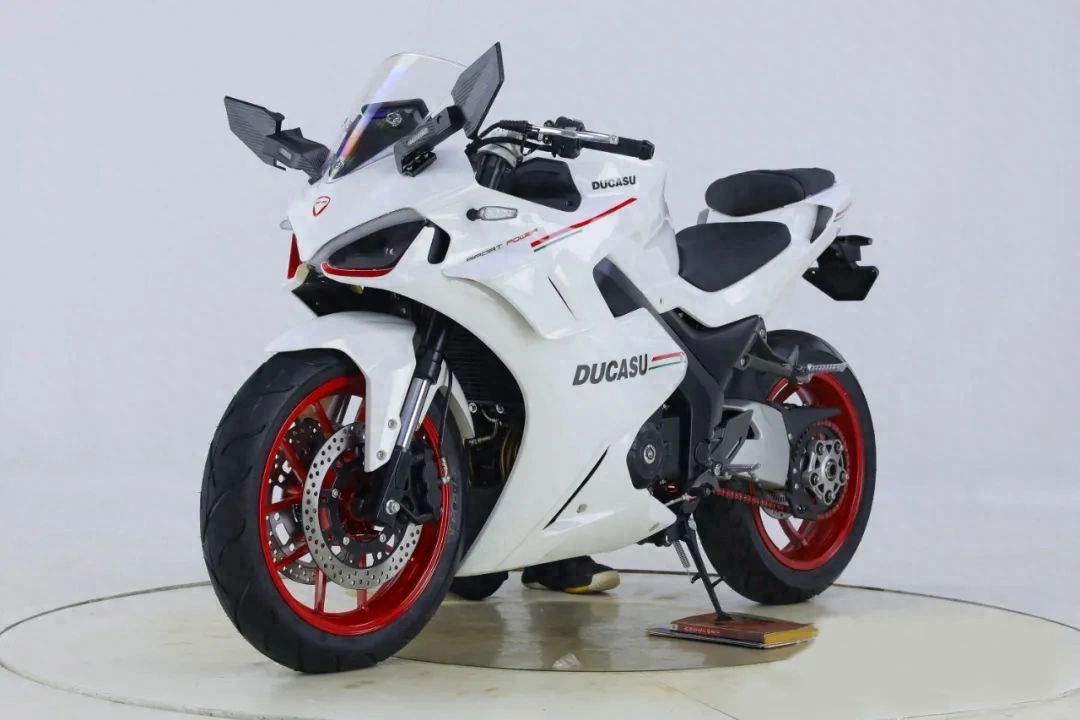‘Next level’ 2024 BMW R 1300 GS revealed
The latest iteration of the BMW R 1300 GS is lighter, more compact, more powerful and more advanced than ever before. Here are some of the headline talking points.

The next generation of Bavarian adventure touring is here, as the lighter, more compact, and more technologically advanced 2024 BMW R 1300 GS finally breaks cover!
It’s a bike that can trace its roots back to the R 80 G/S released in 1980, and while visually there is very little that links the two bikes (boxer twin aside) although the ethos of the new machine basically the same as its predecessor. This is also the biggest visual and technological update to the GS range in quite a long time, and BMW is obviously keen to bring the bike up to speed with its European competition. The most noticeable difference is the styling, which is a clean sheet design that sees BMW finally move away from that asymmetric front headlight. Beneath the new, trimmed-down bodywork though there are some familiar themes still to be found, although it seems like every element of the bike has been fettled and refined to make it lighter, more responsive and easier to ride.
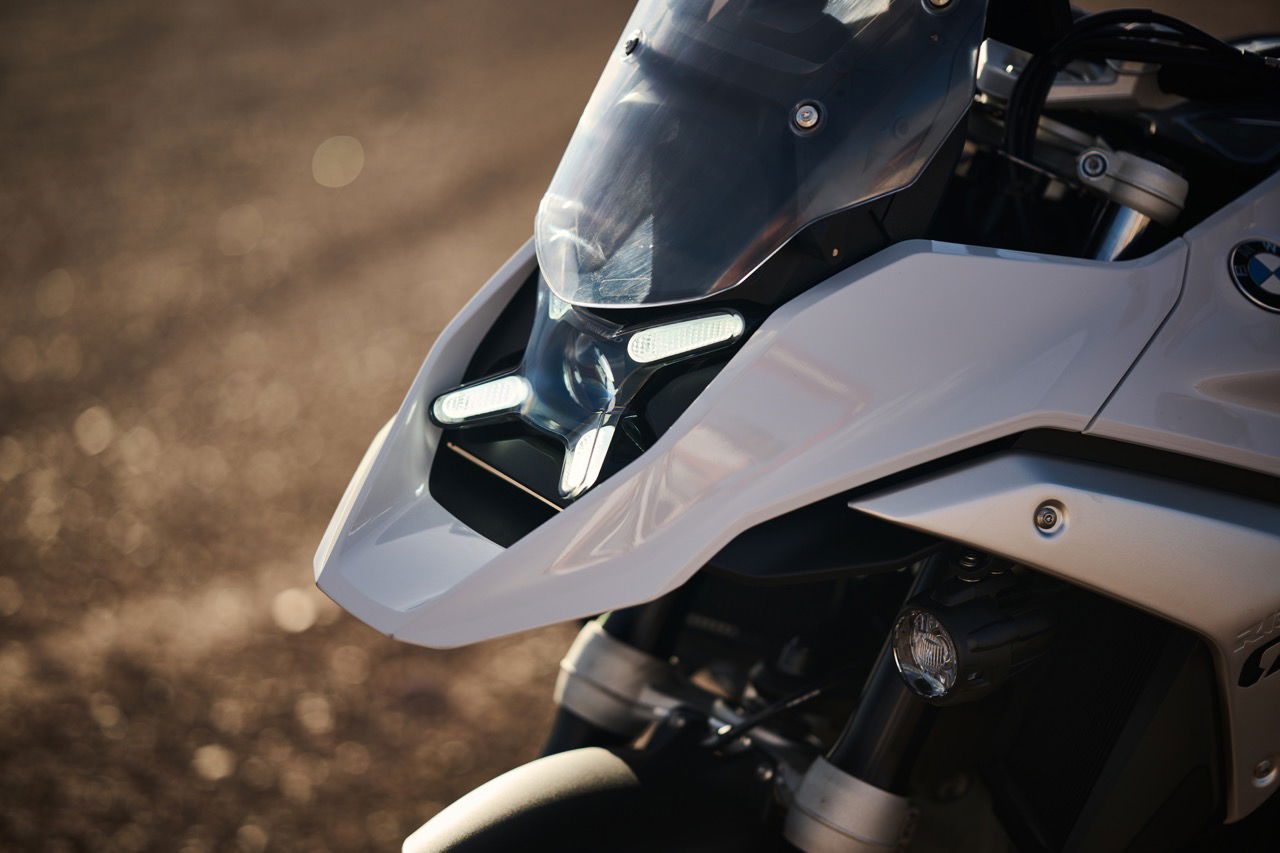
Beginning with the new Shift Cam engine, which is the largest capacity and most powerful version of the boxer twin ever seen, The all-new unit provides the latest generation R 1300 GS with precisely 1,300cc capacity, and BMW’s engineers have managed to shave an impressive 6.9kg from the engine and powertrain compared to the outgoing 1250 version. They have also made it more powerful and with a broader spread of torque, with peak power being a claimed 145hp (143bhp) at 7,750rpm, and peak torque of 149Nm (109lb-ft) and arriving at 6,500rpm. It’s not just the most powerful GS to date, the 2024 version becomes the most powerful production boxer engine BMW has ever created. Headline stats are one thing, and while the numbers reveal a power output lower than the Ducati Multistrada V4 Rally and KTM 1290 Super Adventure, its peak torque figure is higher than both, but that’s just part of the story. BMW is claiming that in the dynamic range (between 3,600 and 7,800rpm) at least 130Nm (95lb-ft) is always on tap.
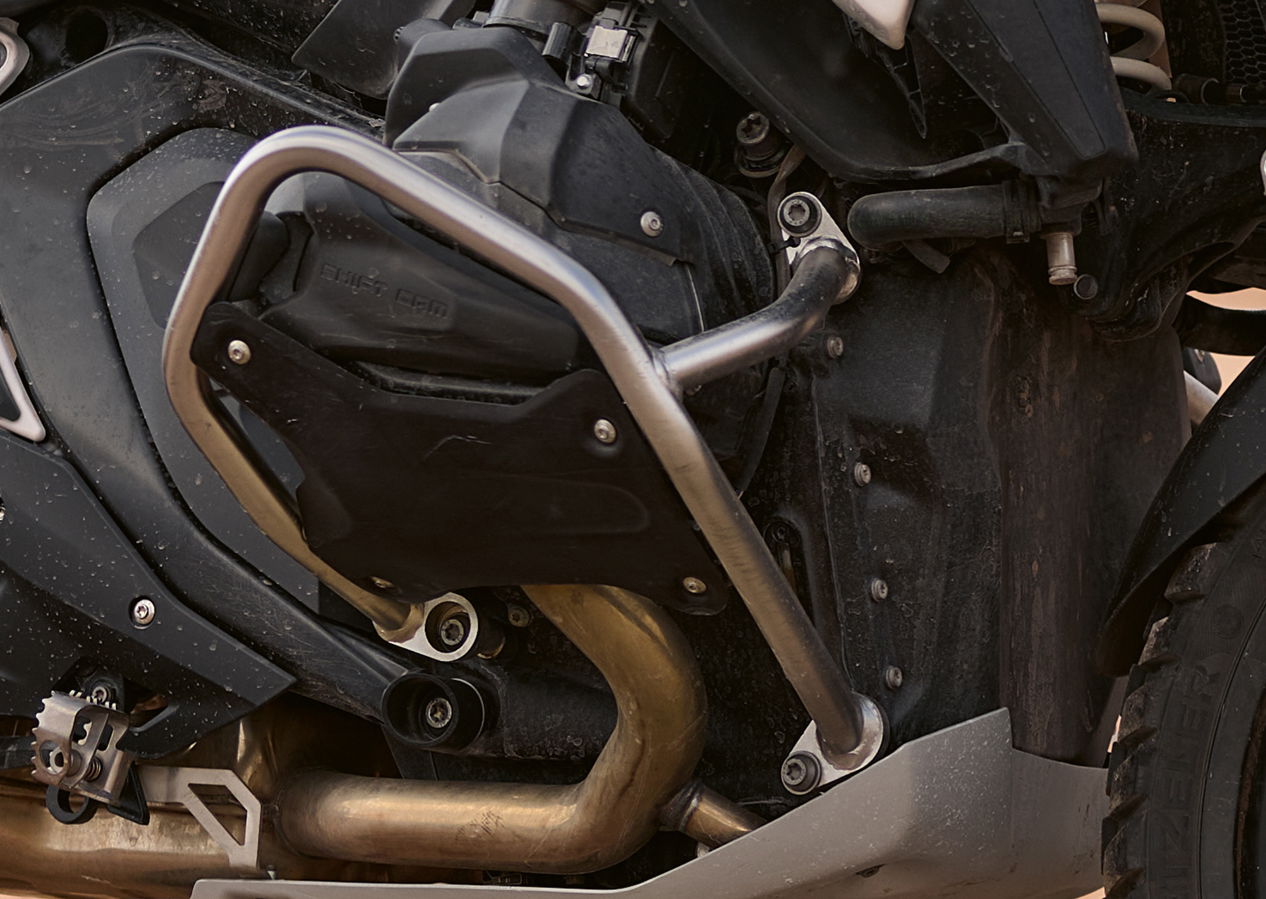
The gains in the engine's performance have been achieved thanks to a complete nut-and-bolt redesign that includes completely new internal architecture. It’s still an air/liquid-cooled unit, but now features a higher compression ratio of 13.3:1 compared to the outgoing 1250 which had a 12.5:1 compression ratio. The capacity hike is thanks to a slightly larger bore and shorter stroke of 106.5mm x 73 mm respectively. Despite its slightly more rev-happy architecture, BMW is claiming the fuel economy of the next generation GS to be ‘almost exactly’ the same as the outgoing bike, with 4.8l/100km (49mpg) being touted.

On the chassis front, the bike still uses the tried and tested Telelever at the front and Paralever at the rear, although the R 1300 GS utilises a new ‘EVO’ design. The EVO Telelever system is claimed to isolate the handlebars from the suspension more than on previous models, something that is said to help ensure that the steering isn’t influenced by whatever the suspension of the bike might be going through. While the front of the bike has had some flex introduced to it, the EVO Paralever at the rear of the machine has been made stiffer, for improved traction while preserving the quick-release rear axle. Overall the new bike has 190mm front and 200mm rear wheel suspension travel.
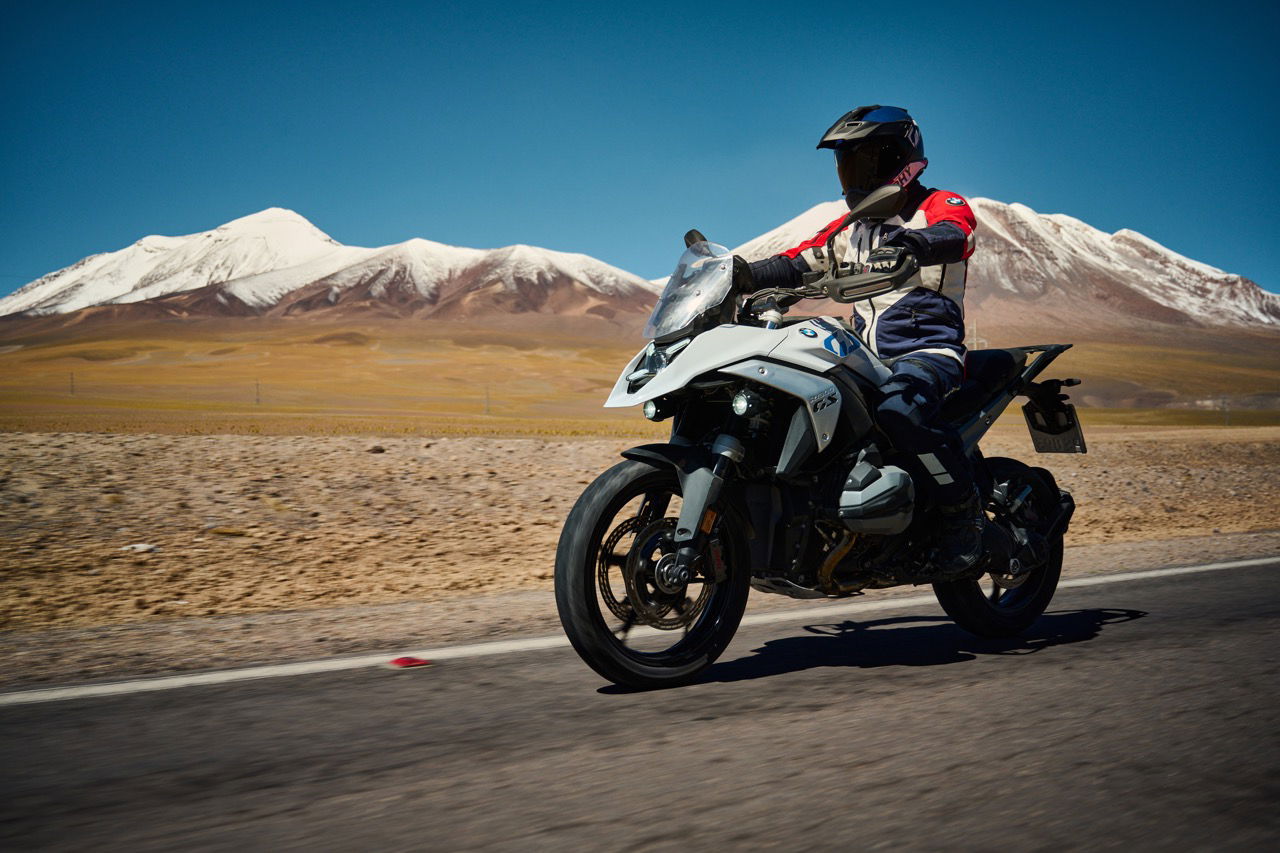
One of the headline claims of the new model is that BMW has made it lighter, more compact, and therefore easier to ride, on and off-road. To facilitate this BMW has shaved weight wherever it could, hacking 6.5kg from the engine and powertrain and making the new whole bike 12kg lighter than before. In ready-to-ride form the 2024 R 1300 GS tips the scales at 237kg compared to 249kg of the outgoing machine. On the manageability front, the new GS features the same 850mm seat height as before, although with four rider seat variants, three different rider footrest positions, and adjustable handlebars, the new version should be a little easier to adapt for shorter and taller riders.
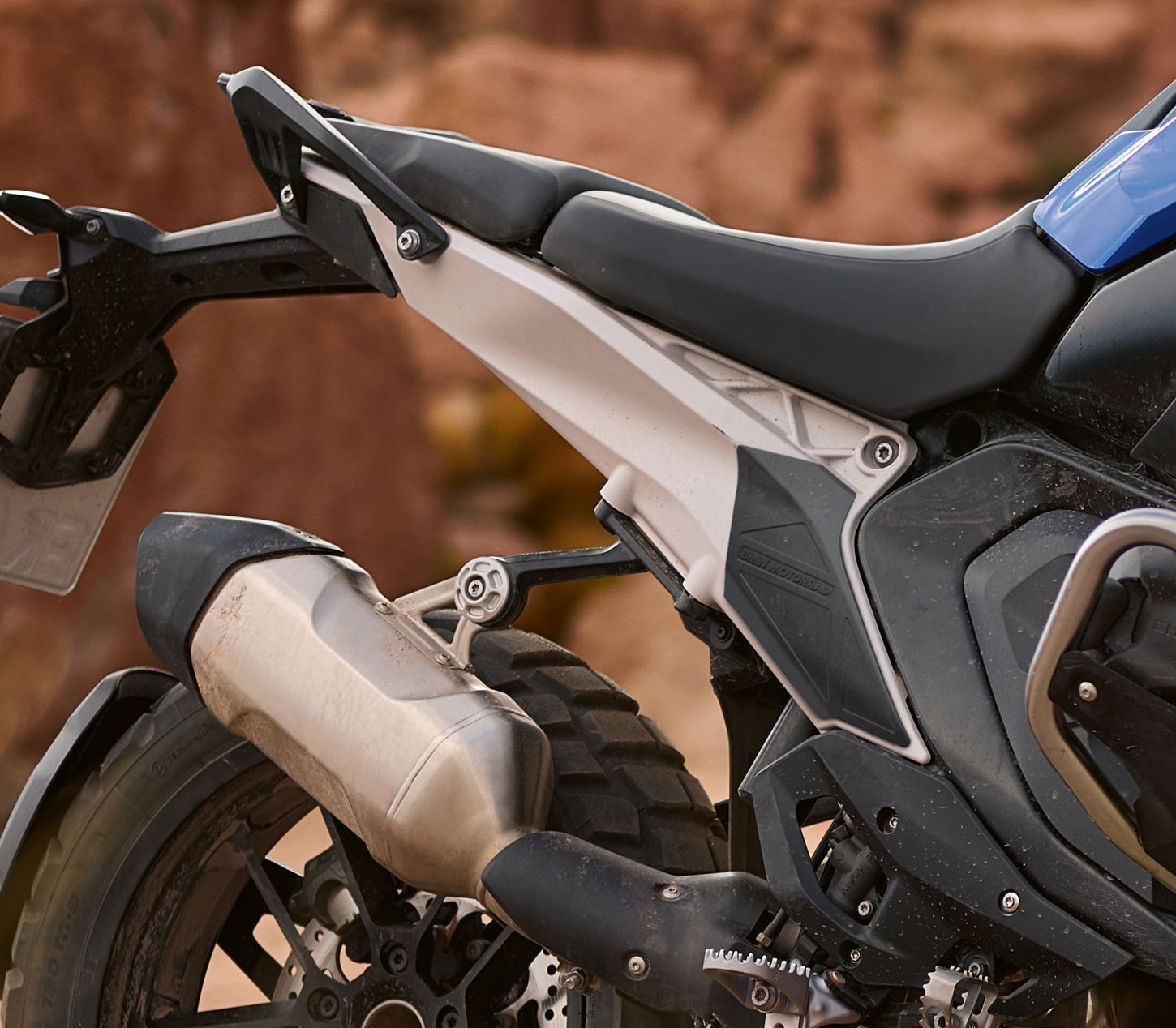
Another new innovation for the GS family is an optional adaptive vehicle height control that forms part of the Electronic Dynamic Suspension Adjustment (DSA) pack that also gains a sports suspension setting specially developed for the GS. The adaptive vehicle height control allows the rider to tailor the height of the bike to the type of riding they are doing, and for shorties like me, that could come in very handy when it comes to getting flat-footed on the ground.
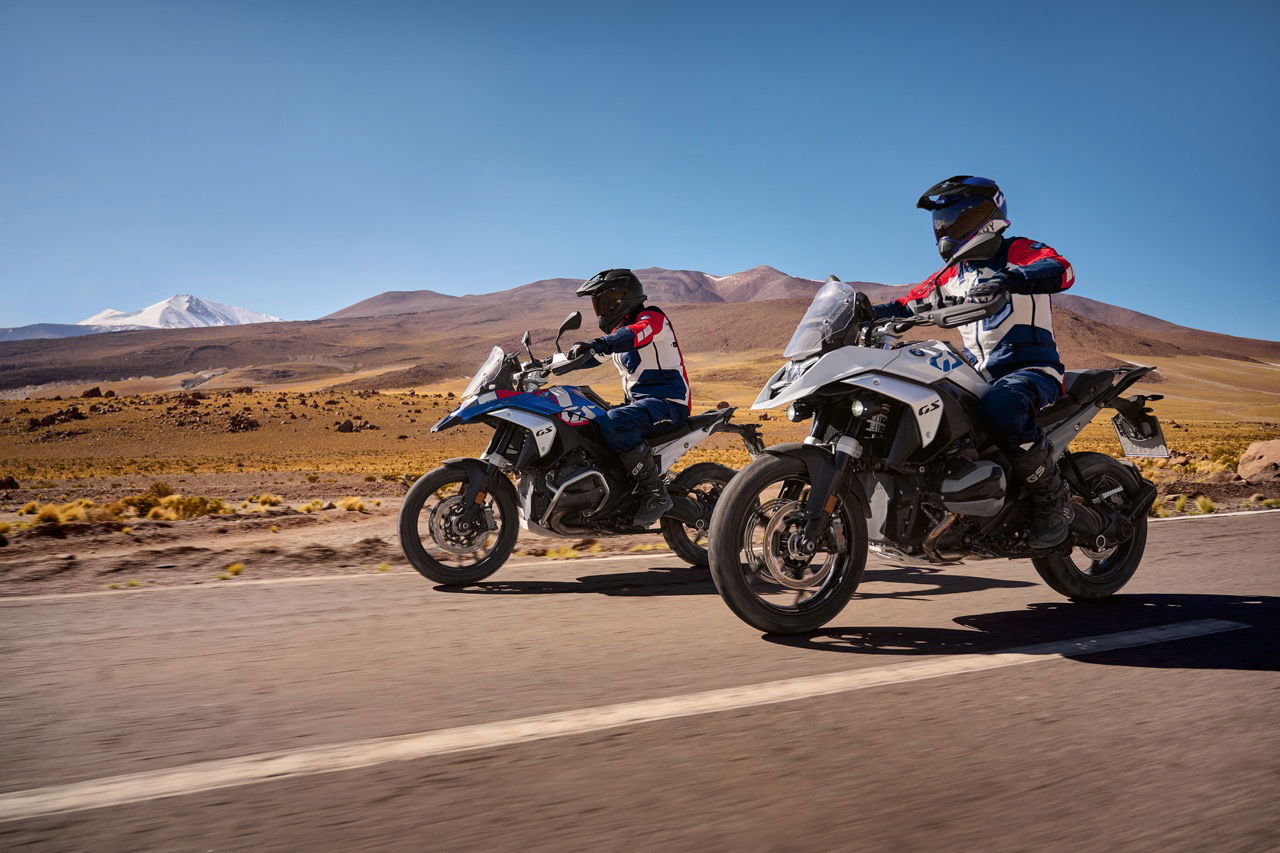
Like the rest of the adventure touring segment, BMW has packed the 2024 R 1300 GS with more tech and features than ever before, with the headline equipment being Active Cruise Control, Front Collision Warning, and Lane Change Warning. The Active Cruise Control uses a frontally mounted radar to maintain the bike’s position and speed in traffic. The Front Collision Warning system is a fairly less well-known feature, and it sounds similar to the tech found on the 2023 Yamaha Tracer 9 GT+. It uses the radar to detect when a vehicle ahead is heading for a collision with the bike and can slow the machine down by actually applying the brakes to either avoid or reduce the severity of a collision. The Lane Change Warning system on the new GS can monitor the lanes to the left and right of the bike and monitor the traffic to the rear thanks to radar sensors. Should the system detect a vehicle to the left or right that could be sat in the rider's blind spot a symbol will illuminate to warn the rider of its presence.

As is the BMW way, there’s a raft of aftermarket kit you can spec on your 2024 GS, although the level of standard tech and features has received a boost too. Because of this, the new machine comes readily equipped with heated grips, keyless ignition for the steering, ignition and fuel tank, tyre pressure monitoring system, engine drag torque control, ABS Pro, Cruise control, a Lithium Ion battery, and hand protectors with integrated turn indicators.
On top of that, the list of aftermarket (or Ex Works as BMW calls it) additions include Driving Modes Pro, Headlight Pro, Seat heating, Intelligent Emergency Call, and handlebar risers, while the list of aftermarket accessories, luggage, and crash protection is almost endless.

2024 BMW R 1300 GS price and availability
The new R 1300 GS is said to be rolling into UK dealerships in November 2023 and will be starting at £15,990 for the base model, and £18,465 for the higher spec TE.
More information on the new 2024 BMW R 1300 GS can be found on the official website.

2024 BMW R 1300 GS specification (base model)
Engine capacity | 1,300cc |
Power | 145hp (143bhp) @ 7,750rpm |
Torque | 149Nm (109lb-ft) @ 6,500rpm |
Bore/stroke | 106.5 x 73mm |
Compression ratio | 13.3:1 |
Suspension front | EVO Telelever (electronically adjusted) |
Suspension rear | EVO Paralever (electronically adjusted) |
Brakes front | Twin semi-floating brake discs, Ø 310mm, 4-piston radial calipers |
Brakes rear | Single disc brake, Ø 285 mm, 2-piston floating caliper |
Fuel capacity | 19 litres |
Estimated range | 200+ (estimated) |
Seat height | 850mm |
Weight (ready to ride) | 237kg |
BMW CE 04 Review 2022

